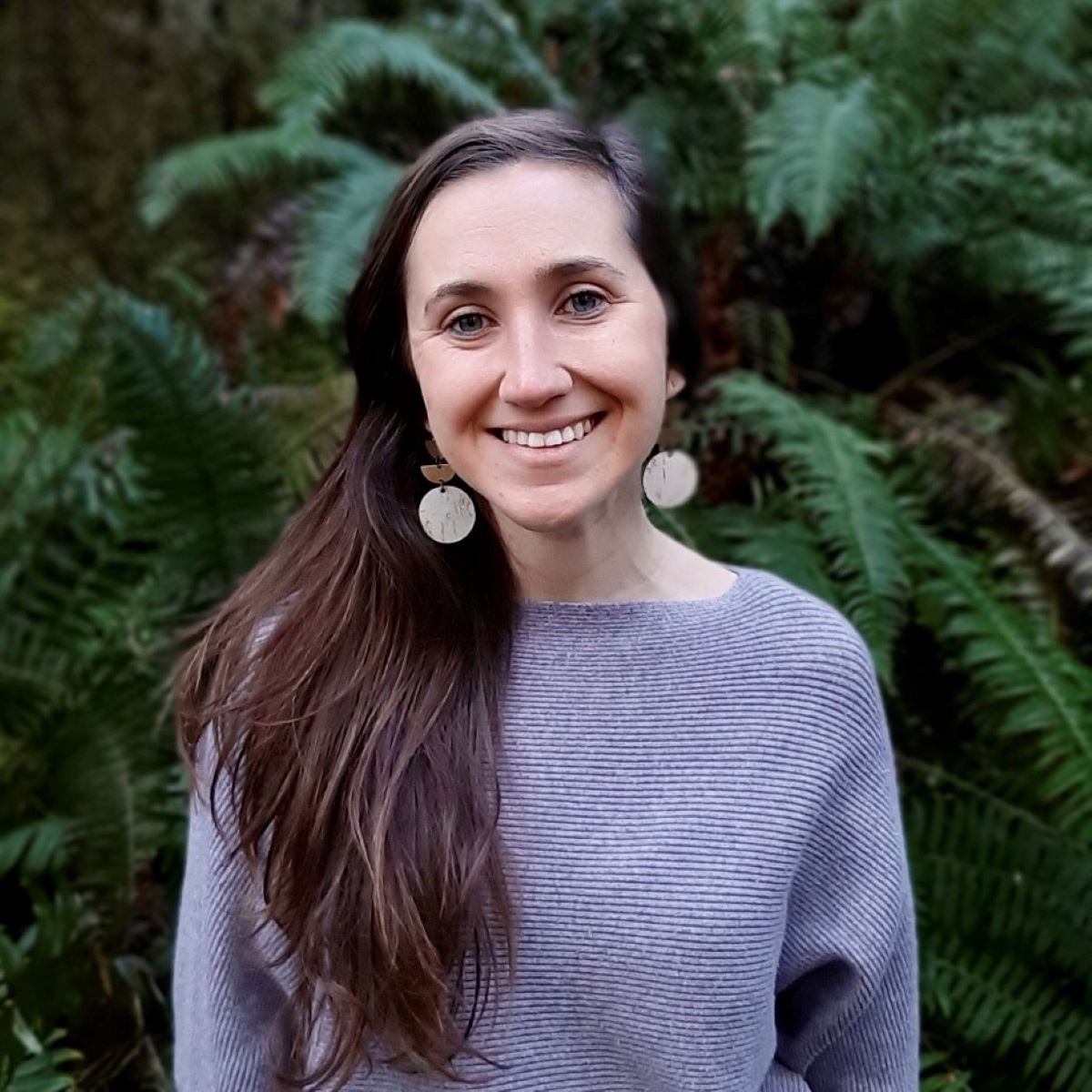How to Become a Nurse Practitioner

You’re likely not at all surprised to hear that not everybody has pleasant interactions with healthcare practitioners, but certain groups of professionals are more beloved than others. Studies have shown that nurse practitioners (NPs) are some patients’ preferred providers because of their stellar bedside manner and interpersonal skills. These patients have been more satisfied with their care, feel more listened to, and get to spend more time with NPs compared to doctors.
One reason for this may be that nurse practitioners are trained in the nursing model, not the medical model. As a result, they tend to be more holistic in their care — and patients notice.
You’ve noticed too. This may even be one reason why you’re choosing to continue your education in nursing to become a provider. So whether you are dreaming about starting your nursing career or are already an experienced nurse, we will show you how to become a nurse practitioner.
What Is a Nurse Practitioner and What Does a Nurse Practitioner Do?
A nurse practitioner is a registered nurse with an advanced degree and additional license. Exactly what does a nurse practitioner do? As advanced practice registered nurses (APRNs), they provide patient care by diagnosing and treating health conditions, prescribing medications, and ordering diagnostic tests. In essence, NPs have similar prescriptive and ordering authority as a doctor and more responsibility than a registered nurse.
For more information, explore this sample job description for a nurse practitioner.
NP Scope of Practice and Autonomy
Once you obtain your nurse practitioner license, you must adhere to the regulations that govern your practice. Each state’s practice act defines your scope of practice, which includes the services you are legally authorized and competent to provide under your NP license.
Understanding your state’s practice and licensure laws is crucial to acting within the legal boundaries of the profession. The level of autonomy a state assigns NPs impacts their ability to treat their patients and is summarized below.
Full Practice
In this category, NPs have complete independence to practice within the full extent of their education and specialized abilities under the sole authority of the state’s Board of Nursing. For example, in Massachusetts, NPs can practice independently after two years of supervision. They can sign documents such as proof of disability for parking permits and Do Not Resuscitate (DNR) orders, which facilitate patient care.
Reduced Practice
NPs in this category have certain limitations in their practice or may be required to maintain a collaborative agreement with another healthcare provider to practice. In Mississippi, for instance, NPs must have a collaborative agreement with a physician or dentist. Although they can apply for prescriptive authority, they aren’t authorized to sign DNR orders or death certificates.
Restricted Practice
NPs in this category face even more limitations in their practice and must work under delegation, supervision, or team management with another healthcare provider. In Tennessee, NPs must practice under the supervision of a physician and have restrictions on prescribing controlled substances. Additionally, they are not allowed to sign DNR orders or death certificates.
How to Become a Nurse Practitioner: 5 Steps
Now that you’ve learned what an NP is, let’s jump into exactly how to earn your advanced practice nursing license. There are five main steps to becoming a nurse practitioner.
1. Obtain Your Bachelor of Science in Nursing Degree (BSN)
Your nurse practitioner schooling begins by earning your BSN. Most programs will take about four years, depending on the route you choose. A BSN program will prepare you to become a RN, and will include a combination of general course work, laboratory work, and clinical rotations.
If you already have an associate degree in nursing (ADN) and your RN, you can enroll in an accelerated RN-BSN program. These programs take an average of 11 to 18 months.
If you have a bachelor of science in another field, there are additional options to consider. You can complete an accelerated BSN program in approximately 12 to 18 months and obtain experience to build your advanced practice before pursuing your NP.
You can also attend a direct-entry program that will allow you to directly pursue a master of science in nursing (MSN) or doctorate of nursing practice (DNP) to become a NP. After the initial part of the program is completed, you will be able to sit for the NCLEX and obtain your RN license prior to proceeding to the advanced coursework.
Whichever route you choose to become a nurse practitioner, make sure your nursing program is accredited. In the U.S., you’ll want to look for an Accreditation Commission for Education in Nursing (ACEN) or Commission on Collegiate Nursing Education (CCEN) accreditation.
2. Take the NCLEX
Once you’ve completed your nursing degree, your next step is to take the NCLEX exam. The NCLEX is the national exam required of all nursing school graduates to begin practicing as a registered nurse. Once passing this exam, you can officially call yourself a RN.
Consider this like a driver’s license test for students who completed their required driver’s education and hours to obtain their driver’s license. The NCLEX gives you the license to practice nursing.
3. Practice as an RN
Before you are eligible to apply to a program to become a nurse practitioner, you’ll need nursing experience. Most programs require one to two years of clinical nursing experience. Use this time to identify the specialty you want to work in as an NP.
Try to enjoy this time before entering an NP program. Not only are you strengthening your nursing skills, you’re also learning what it truly means to work in healthcare. These years will give you confidence in your choice to pursue further nursing education.
4. Apply to a Graduate Program
Several questions surrounding how to become a nurse practitioner are about the types of programs. You have two main options for nurse practitioner programs: an MSN or DNP.
An MSN program can be completed in one to two years, whereas a DNP will take you three to six years to complete. Both MSN and DNP programs have online nurse practitioner programs.
For a MSN, you will have a clinical practice requirement of 600 to 700 hours that must be done in person. For a DNP, you will need to complete at least 1,000 practice hours. Typically, your program will help you find a facility near you.
Choose Your Specialty
The exact program you enroll in will depend on the patient population and nursing specialty you want to study. This will reflect the area you want to work in. The common types of nurse practitioners include:
- Acute Care NP (ACNP)
- Adult-Gerontology NP (AGNP)
- Aesthetic NP
- Cardiovascular NP (CVNP)
- Dermatology NP (DCNP)
- Emergency NP (ENP)
- Endocrinology NP
- Family NP (FNP)
- Holistic NP
- Hospice NP
- Neonatal NP (NNP)
- Oncology NP (AOCNP)
- Orthopedic NP (ONP)
- Surgical NP (SNP)
- Palliative Care NP
- Pediatric NP (PNP)
- Primary Care NP
- Psychiatric-Mental Health NP (PMHNP)
- Women’s Health NP (WHNP)
Adult-Gerontology Acute Care (AG-ACNP)
- Population: Adolescence to late adulthood
- Area of Focus: Preventative care, complex diseases, and critical illnesses
- Setting: Hospital acute care, intensive care, and trauma units
- Certification: ACNPC-AG or AGACNP-BC
Adult-Gerontology Primary Care NP (AGPCNP)
- Population: Adolescence to late adulthood
- Area of Focus: Preventative care, health and wellness, acute illnesses, and chronic diseases
- Setting: Private practices, public clinics, specialty clinics, urgent care, memory care, and long-term care settings
- Certification: AGPCNP-BC or AGNP-C
Emergency Nurse Practitioner (ENP)
- Population: Childhood to late adulthood
- Area of Focus: Life-threatening emergencies, exacerbations of chronic health conditions, and traumas.
- Setting: Hospital emergency departments, urgent cares, mobile clinics, and more.
- Certification: ENP-C
Family Nurse Practitioner (FNP)
- Population: Newborns to late adulthood
- Area of Focus: Preventative care, health and wellness, acute illnesses, and chronic diseases
- Setting: Community health centers, private practice, specialty clinics, and urgent care
- Certification: FNP-C or FNP-BC
Neonatal NP (NNP)
- Population: Newborns up to two years of age
- Area of Focus: Infants that are high-risk or critically ill due to prematurity, diseases and conditions, and birth complications
- Setting: Hospital neonatal units and delivery rooms, and specialty clinics
- Certification: NNP-BC
Pediatric NP (PNP)
Options for acute care or primary care
- Population: Newborns to young adulthood
- Area of Focus: Preventative care, well-child care, and common pediatric acute and chronic conditions
- Setting: Pediatric and specialty clinics, health centers, urgent care, and hospitals
- Certification: CPNP-AC or CPNP-PC
Psychiatric Mental Health NP (PMHNP)
- Population: Childhood to late adulthood
- Area of Focus: Psychiatric and mental health disorders and illnesses
- Setting: Private practice, specialty clinics, hospitals
- Certification: PMHNP-BC
Women’s Healthcare NP (WHNP)
- Population: Adolescence to late adulthood
- Area of Focus: Gynecological, obstetrical, and primary care
- Setting: Planned Parenthood, private practice, specialty clinics, and hospitals
- Certification: WHNP-BC
5. Earn Your NP License
All nurse practitioners are APRNs, which requires additional licensure. Once you’ve completed your NP program, you’re ready to take the national board certification exam. Some NPs go on to find a job right after obtaining licensure, while others pursue an NP fellowship to help prepare them for independent practice.
Each state has their own criteria, but in general, you will take the nurse practitioner certification exam specific to your specialty area. For example, if you completed a family NP program, you would take the Family Nurse Practitioner Certification exam.
Depending on the state you’re in, you may go by one of the following titles:
- Nurse practitioner (NP)
- Certified registered nurse practitioner (CRNP)
- Advanced practice registered nurse (APRN)
- Advanced registered nurse practitioner (ARNP)
- Certified nurse practitioner (CNP)
- Advanced practice nurse (APN)
How Long Does It Take to Become a Nurse Practitioner?
Becoming a NP is a commitment — it takes about six years. But it’s a practical option for many nurses looking to advance their practice.
What Do Nurse Practitioners Make?
According to the Bureau for Labor Statistics (BLS), the average nurse practitioner salary is $128,490 a year. You can see why a nurse might be attracted to this advanced role. Depending on your location and population you serve, your income may be above or below this salary.
The states that pay the highest average salary to NPs are:
The Demand for NPs Is Huge
Here’s a fact that could make a speeding train stop in its tracks: The BLS estimates that the demand for NPs will grow to a whopping 45% in the next 10 years — much higher than the demand for all other professions. In fact, it’s one of the fastest growing occupation in the entire country. If job security is something that keeps you up at night, rest easy knowing that your employment in this role is all but guaranteed.
What’s contributing to the enormous projected jump? Consider the following:
The aging population. It’s estimated that by 2030, the entire baby boom generation — 73 million people — will be age 65 or older. This is known as a “gray tsunami,” if that’s any indication of just how massive the demographic shift will be. For the first time in our country’s history, it’s predicted that older adults will outnumber children under 18 by 2034. Adding to the aging of the overall population? Americans are living longer, and the birth rate is at a record low. With age typically comes an increased need for healthcare services. Enter nurse practitioners.
Team-based healthcare models are growing in popularity, most notably in hospitals, doctors’ offices, clinics, and ambulatory care centers. Nurse practitioners are part of the teams providing preventive and primary care services. (Did we mention patients sometimes prefer NPs to doctors?) And as states introduce legislation to expand APRNs’ practice authority, NPs will be permitted to perform a wider scope of services.
The cities that employ the greatest numbers of NPs are:
Where Do Nurse Practitioners Work?
According to the American Association of Nurse Practitioners, the vast majority of licensed NPs who are clinically practicing are providing primary care. (Depending on where you live, you may be able to practice independently, meaning without a doctor’s oversight.) That said, you can work in many settings including:
- Hospitals: acute or chronic care, emergency departments, and surgery
- Outpatient NP jobs: specialty care, urgent care, and rehabilitation
- Primary care: public or private practice
- Community health: federally qualified health centers (FQHCs), clinics, or community health centers
- Remote NP jobs
Basically, you can find a job as a nurse practitioner in just about any healthcare facility or setting that a registered nurse would work. Check out all the nurse practitioner jobs on IntelyCare to get a better idea of where you might work.
What’s the Difference Between a Nurse Practitioner vs. Physician Assistant?
The key difference between a nurse practitioner vs. physician assistant (PA) is the model they are trained in. A nurse practitioner is trained in the nursing model, which focuses on the individual patient with a disease process. Practically speaking, this means an NP assesses how a disease affects all areas of a patient’s life.
A physician assistant is trained in the medical model, which focuses on the patient’s disease process. This means a PA is concerned with how diseases work biologically and how to cure them.
Both have advanced degrees and are licensed healthcare professionals. An NP tends to have a specialized degree whereas a PA tends to have a generalized medical education. An NP can work independently in many states, whereas as a PA works interdependently with physicians.
What’s the Difference Between a Nurse Practitioner vs. Doctor?
Similarly, the key difference between a nurse practitioner vs. doctor is their training models. A NP is trained in the nursing model and a doctor is trained in the medical model.
Doctors are able to practice independently in all 50 states. Nurse practitioners can practice independently in 27 states. Both are licensed healthcare providers with advanced degrees, the authority to prescribe medications, and the ability to order diagnostic tests.
Wondering How to Get Started?
Now that you know how to become a nurse practitioner, you’re ready to start finding opportunities that align with your skills. Need help finding work you love? Find out how IntelyCare can match you with nursing jobs that meet your needs.



